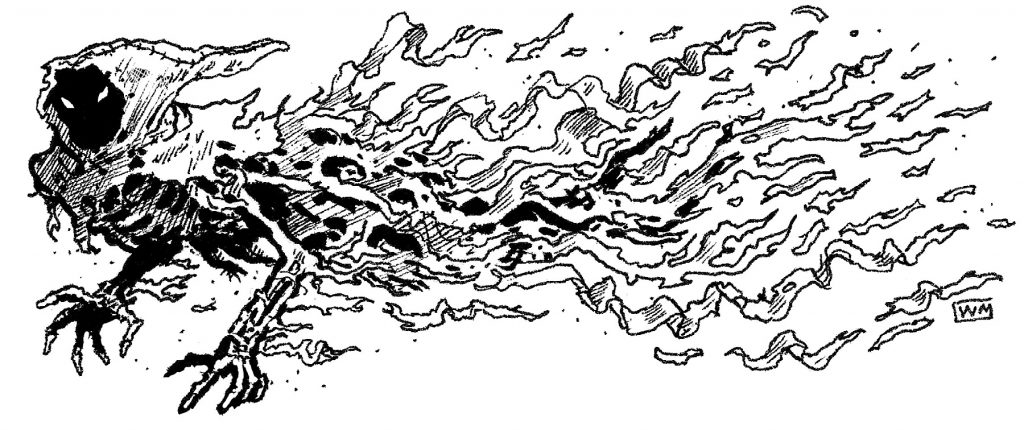We recently had a disastrous session in my Shattered Star campaign. The party had a rather nasty run-in with a pack of four greater shadows. Things went badly, and our heroes had to destroy two of their own who succumbed to the shadows’ strength damage attacks and rose again as undead abominations.

Greater shadows inflict 1d8 Strength damage which is particularly dangerous. Shadows kill opponents when this damage equals or exceeds a creature’s Strength score and few PCs have a Strength score higher than 18.
The big problem we discovered is that spells such as lesser restoration, restoration and greater restoration take three rounds to cast (even from a wand or scroll). This makes healing a greater shadow’s damage a very slow, time-consuming process—exactly what you don’t want during a combat. (As and aside, this makes potion of lesser restoration particularly handy). Given this, greater shadows, and similar creatures such a dread wraiths, are incredibly dangerous.
I’ve got to wonder why the game’s designers gave the various restoration spells such a long casting time. I can’t think of many other spells with such a long casting time that would obviously be used in the throes of combat. Given the spells entered the game with the advent of 3.0 I’m assuming the designers had a reason for the long casting time. Thing is, I can’t imagine what it could be!
Why?
Got a theory about the long casting times? Let me know, in the comments below.
Hi Creighton,
which version are you playing? Because in 5E Lsser and Greater Restoration are a 1 Action casting time. And since you mention Restoration as a spell I’m assuming it’s an earlier version as that spell isn’t in 5th.
He normally writes from the perspective of Pathfinder
Ah yes. I should have said. I was talking about Pathfinder!
I always thought it was to make the potions particularly useful.
As the AD&D spells used to fatigue the caster and recipient assumed it was to keep the spells as “out of combat” as possible.
It’s one of the reasons I’ve always felt energy damage/drain has always been over powered and should be used sparingly.
Right, I always got the impression that energy drain was meant to be a plot point later and not something to be managing in the midst of a combat encounter. So it wasn’t meant to be something you’d fix during combat. You’d dispatch the monsters and then patch up the party later.
Restoration was a spell since AD&D. It had a 3 round casting time then, was 7th level, and the equivalent of greater restoration in D20.
What was introduced were weaker versions of that spell, at lower levels, and so they kept the 3 round casting time.
I would note that shadows only did 1 point of Strength damage in AD&D, so on average it would take 10 hits to kill someone from Strength drain, rather than the 3-5 a greater shadow can unleash in D20.
As such, a better question to ask would be what were they thinking of when they upped the Strength damage from shadows, particularly for greater shadows.
This is similar to the issues they caused in AD&D 2nd edition when they adopted the Strength scores for monsters, which greatly increased the base damage of such standards as ogres from weapon +2 to weapon +6. They upgraded the monsters without adjusting their threat level, or adjusting the magic needed to deal with them.
This is a great point, Sam. Thanks for bringing it up.
In the fight which sparked my pondering, I was very glad none of the dread wraiths scored a critical hit…
I tend to allow death ward to prevent ability drain from undead as well an energy drain effects. But that’s not RAW. I guess a lesson can be learned. Be prepared. Scout/scry ahead and have an escape plan.